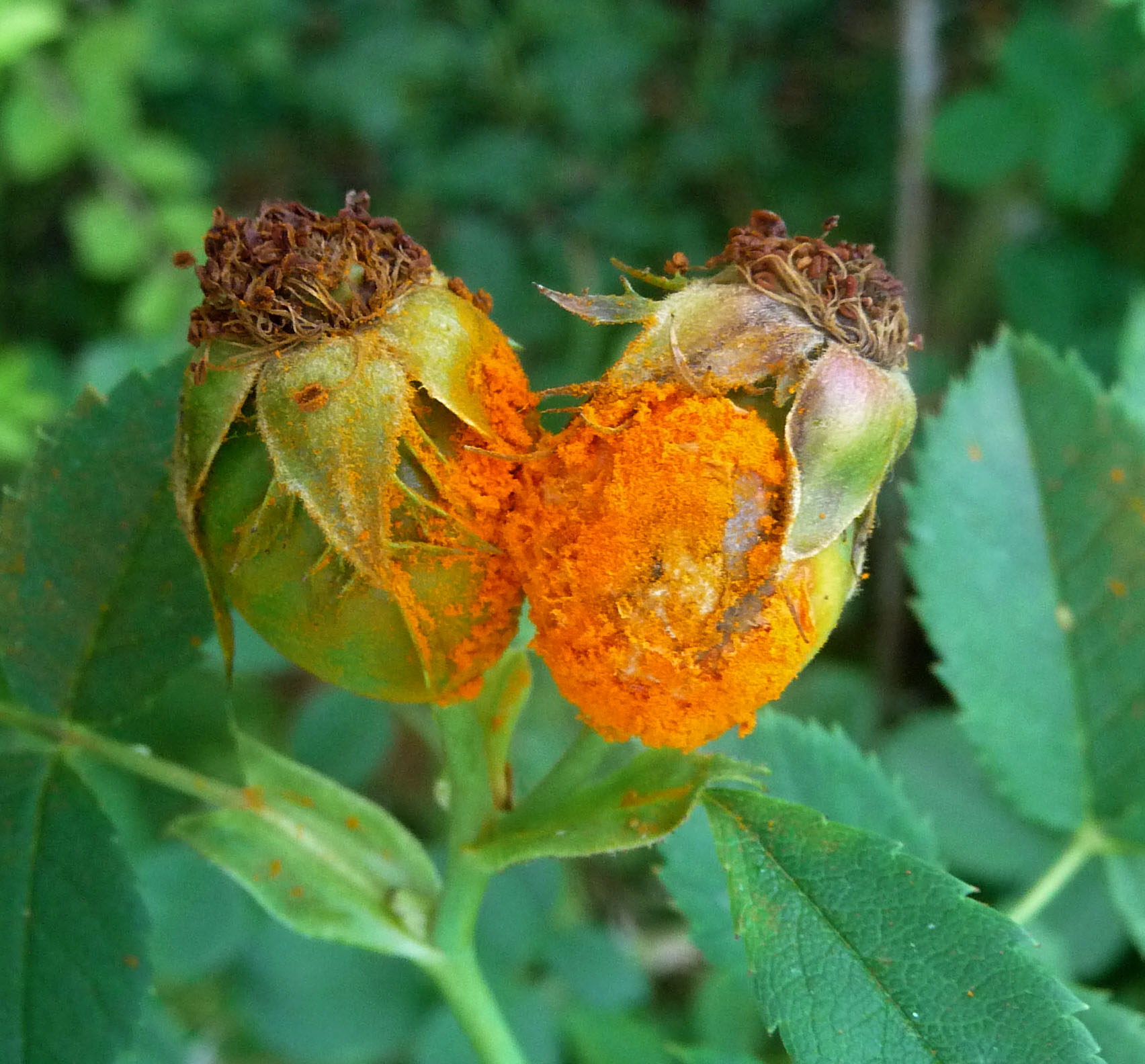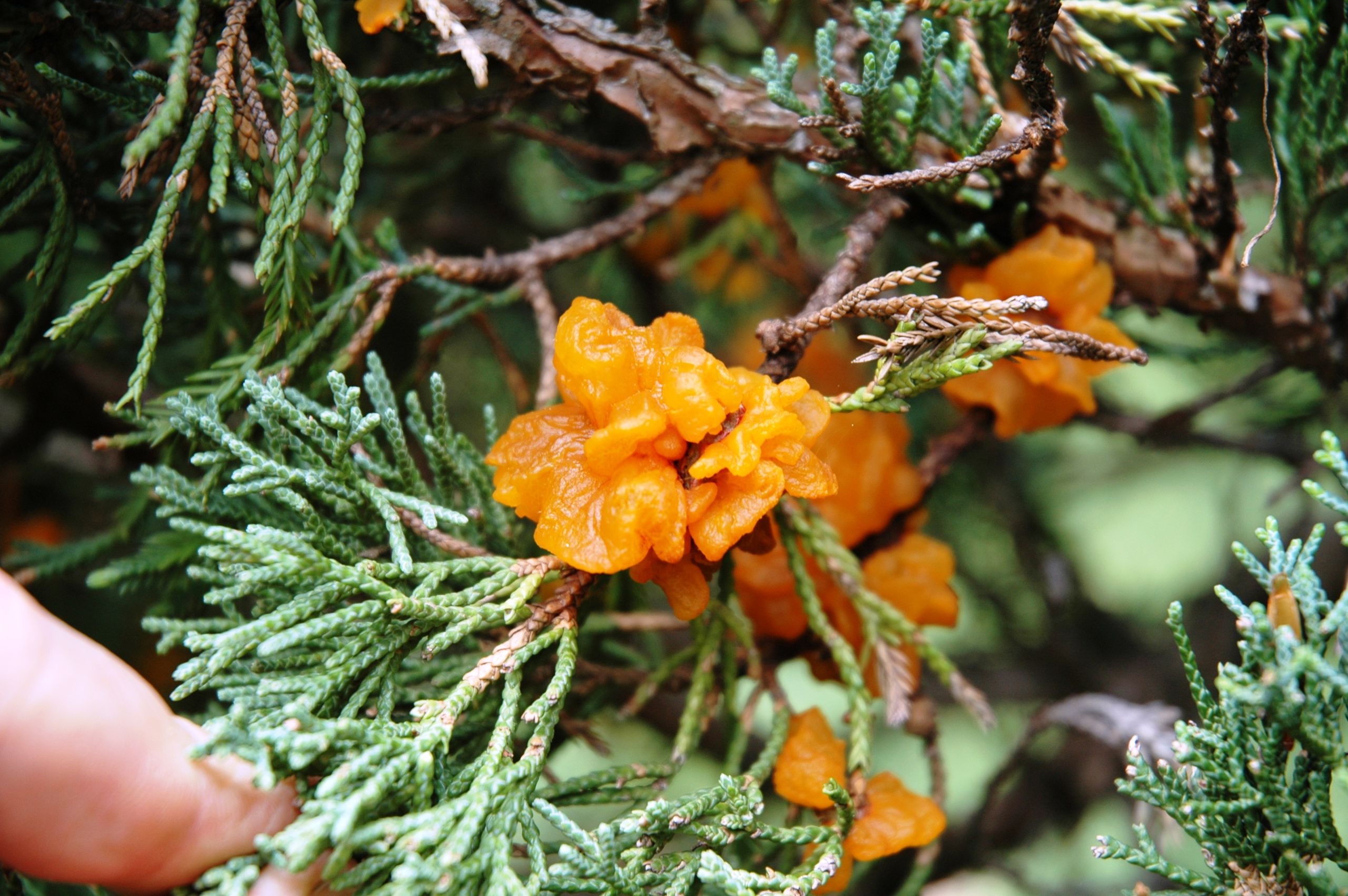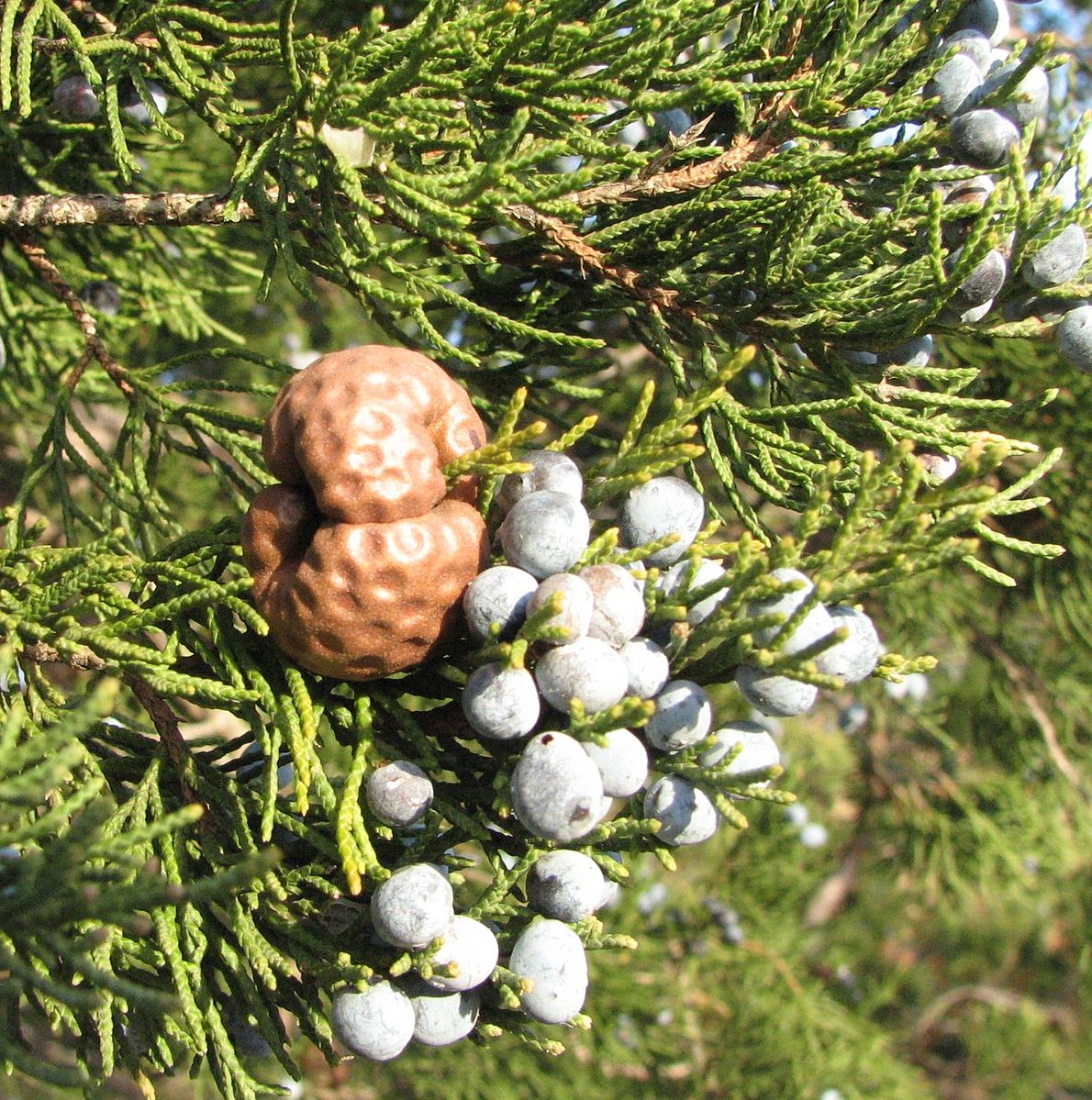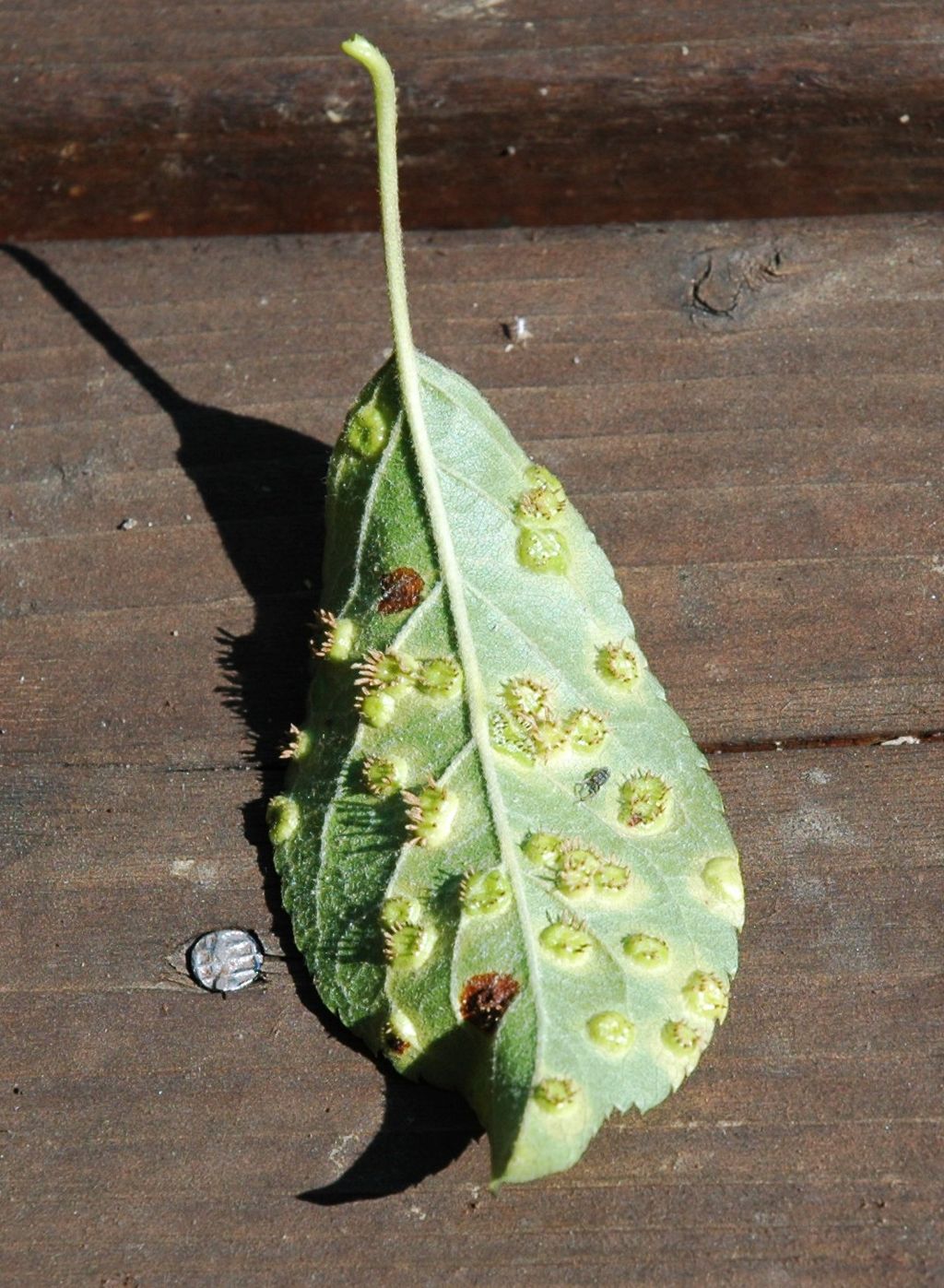2.45: Rust fungi (order Pucciniales, formerly Uredinales)
- Page ID
- 70395

Rust fungi are a common, interesting and economically significant group of fungi. They are obligate parasites of flowering plants, including a number of important crop species: corn, wheat and most cereal grains. Many rust fungi are heteroecious, meaning that they alternate between two hosts. Others are autoecious and only infect one type of host plant. They are particularly challenging to study because, unlike most fungi, which can be cultured on nutrient media, rust fungi can only be grown on living plants, so in order to grow the fungus you have to grow the plant.

Phylogeny
The Pucciniales are an order (i.e. a group of related genera) in the Basidiomycota (club fungi). The group had long been recognized based on their behavior (life cycle) and the structures that they produce on their host plants. Modern molecular studies have confirmed the group as a phylogenetic entity. Many of the structures produced by rusts are orange, hence the common name 'rust fungi' .
Structure
Many of the structures of these fungi are small and not readily observed without a microscope, but some result in the production of characteristic galls on their host plants. A particularly significant feature of these fungi is an haustorium, the structure that occurs inside infected cells and is constructed both of the membrane of the fungus and that of the host plant cell. It is through this haustorium that nutrients pass from the plant to the fungus, allowing it to grow and reproduce.
Sex and reproduction
Rust fungi life cycles are complex. They have multiple stages, typically four or five, that are distinguished by a number of features, including the host plant on which it grows, the structures that are produced, and the 'ploidy' number of the cells (whether they are haploid, diploid or dikaryon). Most of these stages start and end with a type of spore, hence rusts typically produce four or five different spore types and often have a spore produced on one plant species (e.g. hawthorn trees) that is capable of infecting another species of plant (e.g. juniper trees).
Matter and energy

These fungi are heterotrophs that feed upon material produced by other living organisms. They are unusual because they can only be fed by living cells of their host. Even though the nutrients that they need (e.g. sugars, amino acids) might be supplied from non-living sources, these 'obligate biotrophs' cannot absorb nutrients except from the haustorium, the structure produced inside a living cell of its host.

Pictured above is a juniper branch with dormant gall caused by a rust fungus. For a brief period in the spring it turns bright orange (see previous picture) and produces 'horns' from which spores are dispersed that infect its alternate host, which may be apple, crab apple, hawthorn or a number of other species. The leaf on the right is a crab apple showing galls on the underside of the leaves. Often the top of the leaf shows orange spots. Spores produced by the galls infect juniper, completing the life cycle.
Interactions
Depending upon the rust species, the impact on the host can vary from negligible to devastating. Rust diseases are very significant to several crop species including wheat, corn, coffee and white pine, where they can have serious economic impact. In this area rust fungi are commonly seen on both hawthorn and its alternate host, juniper, and also on blackberries (this fungus is autoecious and has no alternate host).
Some of the spores are produced in a sugary substance (nectar) that attracts insects who feed on the nectar and can transport the spores to other plants.
Further Reading
“The Rust Fungi” by Kolmer, Ordonez, and Groth
“Cedar Apple Rust (Gymnosporangium juniperi-virginianae Schwein.)” by David Taylor
“Stem rust of wheat” by Schumann and Leonard


